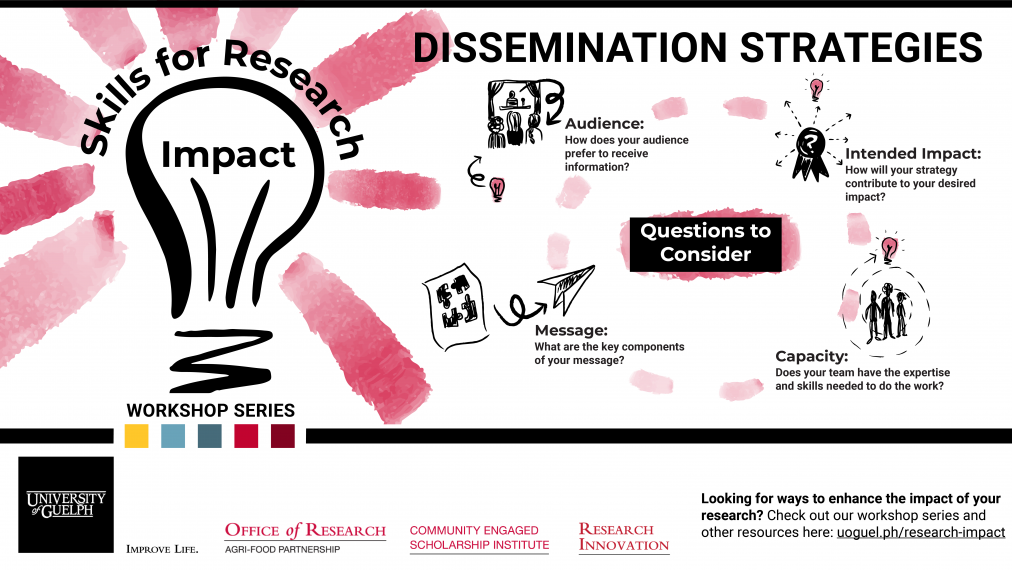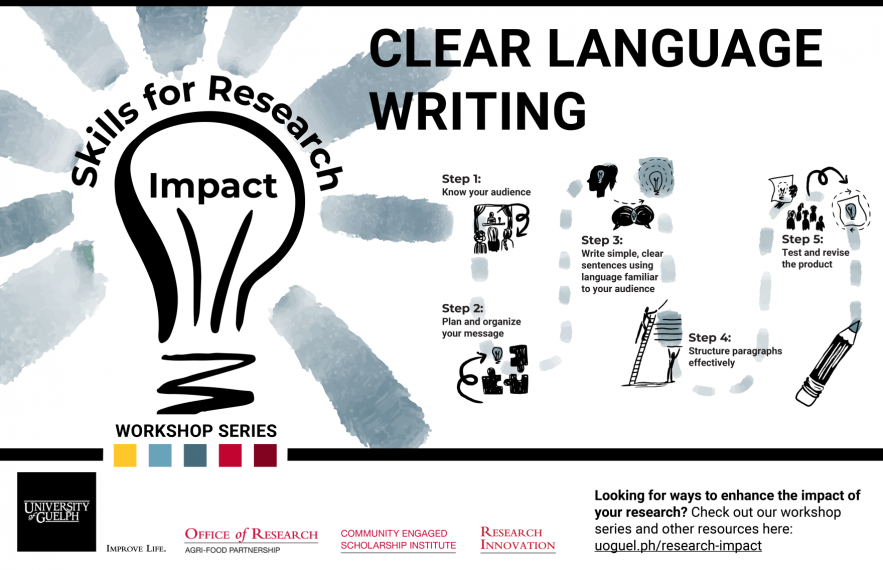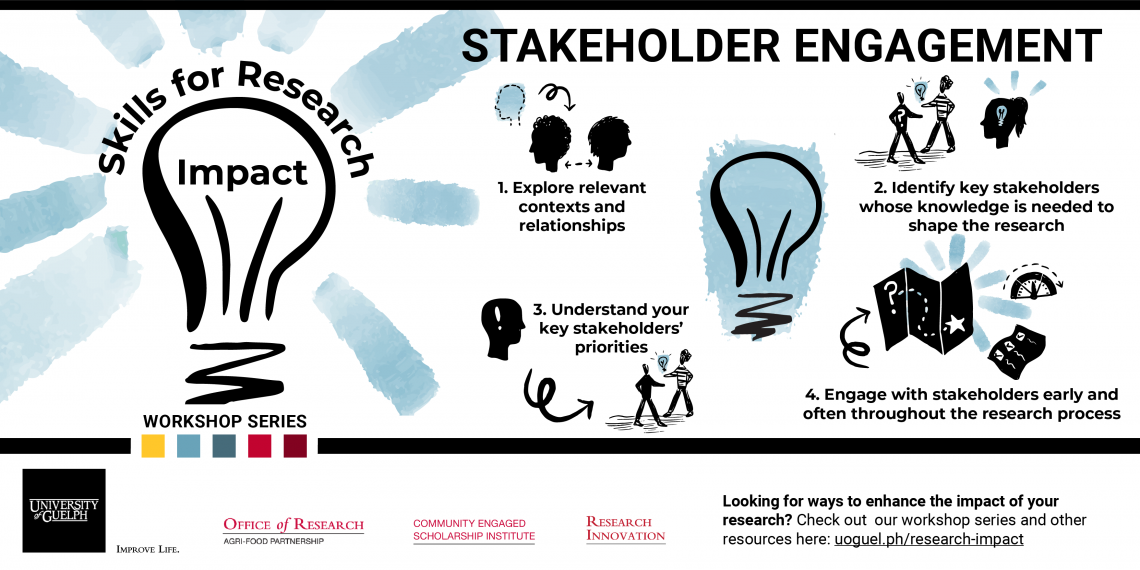
Skills for Research Impact - KTT Strategies and Dissemination
Register for this free workshop running Nov. 10, 2020 from 1 to 2:30 p.m.

Register for this free workshop running Nov. 10, 2020 from 1 to 2:30 p.m.
Plant agriculture professor Jayasankar Subramanian and his team are developing new technologies to decrease fruit spoilage, part of Ontario’s annual food waste that costs a total of $12 billion per year.
The government of Ontario is investing $6.52-million in University of Guelph research to help find ways to prevent or control costly crop diseases and pests, improve soil health and water quality and quantity and boost productivity and profitability for farmers.
The University of Guelph’s Ridgetown Campus has received $6.5 million from the Ontario Ministry of Agriculture, Food and Rural Affairs toward construction of a new field crop services building.

Hone your clear communications skills! Get tips on how to structure and write clear language summaries of your research for dissemination to lay audiences.
The Call for proposals is open from Oct. 14 until Dec. 15, 2020 at noon.

The Call is open from Oct. 14 until Dec. 15, 2020 at 1:00 p.m.
Gryphon’s LAAIR (Leading to the Accelerated Adoption of Innovative Research) funding program aims to take the best research and use it to develop new products, which should attract private sector funding, create jobs and make Ontario more competitive.

Reflect on how to engage your stakeholders throughout your research process to increase your impact, and review engagement best practices for policy, industry and community actors.
The call is open from Oct. 5 to Dec. 2, 2020.
Explore research at Ontario’s Agricultural Research Stations in this four-part webinar series hosted by the Ontario Agri-Food Innovation Alliance. These webinars will demonstrate how Ontario’s agricultural research stations provide a platform for innovative research and collaboration that benefits Ontario’s agri-food sector.